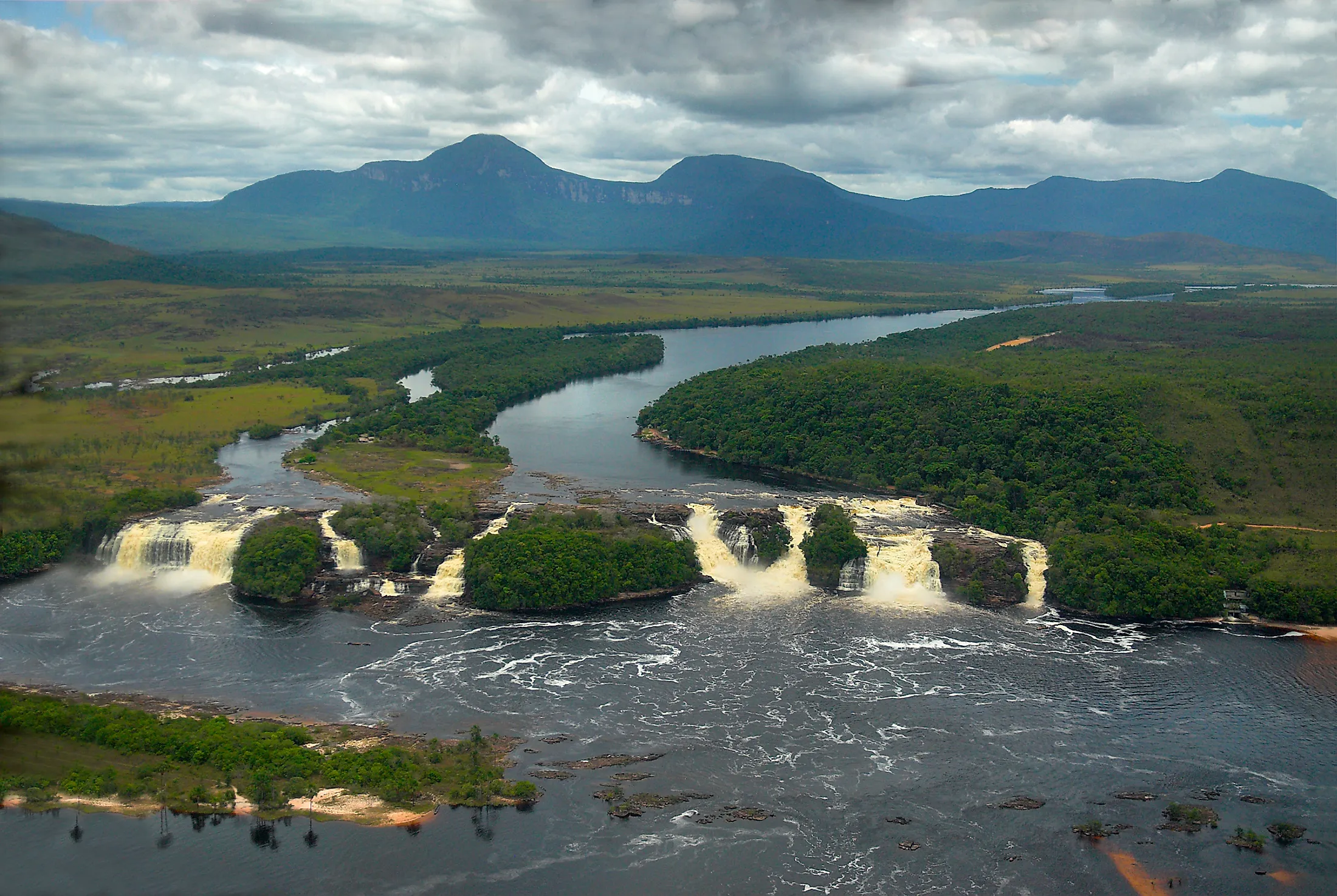
Orinoco River
The Orinoco River flows through Colombia and Venezuela in South America. It is considered the fourth largest river in the world in terms of discharge quantity. It runs over a course of 1,330 miles, making it one of the longest rivers on the South American continent.
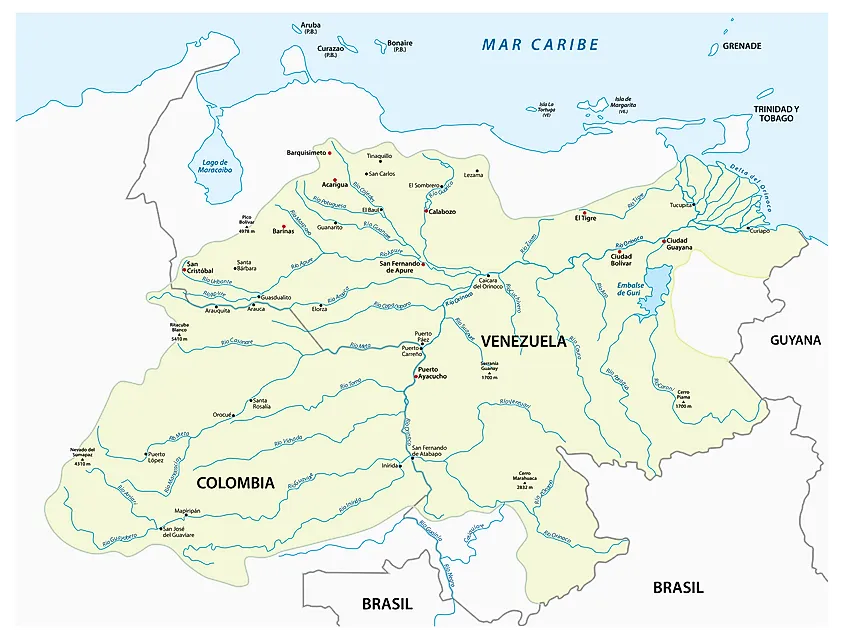
The headwaters of the Orinoco River begin in Venezuela, near the border of Brazil. The source of the river is a spring located on Mount Delgado Chalbaud, which sits at an elevation of 3,435 feet above sea level. This peak makes up part of the Parima Mountains, which are situated within the Guiana Highlands area of the Guiana Shield in Venezuela. The entire Orinoco Basin covers a total area of between 340,000 and 366,000 square miles, three-quarters of which lies completely within Venezuela. During wet season, the Orinoco River can reach up to 14 miles across and 330 feet deep.
Course Of The Orinoco River
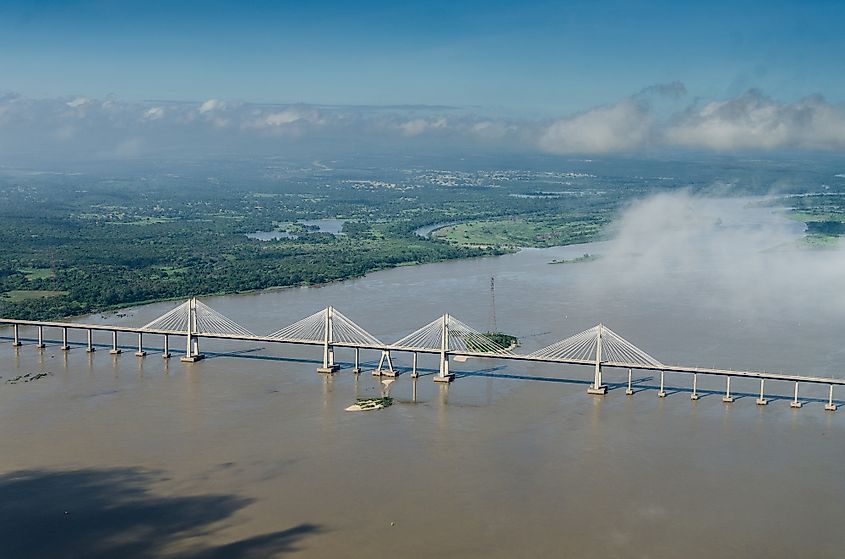
Upper Orinoco
From its source on Mount Delgado Chalbaud, the streams that feed the Orinoco River run in a northwestern and western direction. The first 150 miles of the river flow through the mountainous region until reaching the Guaharibo Rapids. This section of the river is known as the Upper Orinoco.
Middle Orionoc
After rushing over these rapids, the Orinoco River turns west for about 300 miles, until it joins the Guaviare and Atabapo Rivers near the city of San Fernando de Atabapo in Venezuela. From this confluence, the Orinoco River continues for an additional 170 miles, making up part of the border between Colombia and Venezuela. This 470-mile stretch of river is referred to as the Middle Orinoco.
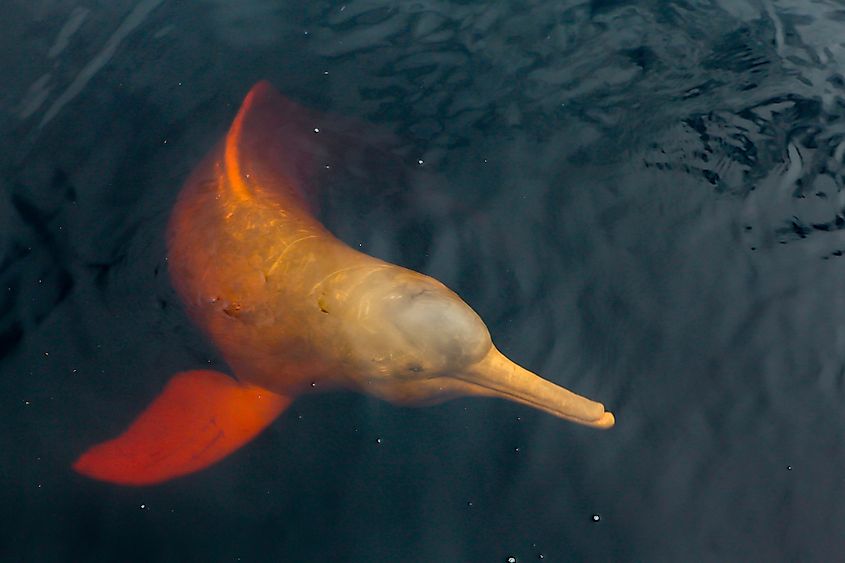
Lower Orinoco
Once the river flows over the Altures Rapids, it enters an alluvial floodplain region and moves in a generally northeastern direction for 596 miles. This section of the river is known as the Lower Orinoco.
Orinoco Delta
From the city of Piacoa, the Orinoco River fans out into a large delta area that runs for 120 miles before flowing into the Gulf of Paría at the Atlantic Ocean. This section of the river is known as the Delta Amacuro, which measures 230 miles at its widest point. The Delta Amacuro covers an entire area of 8,700 square miles, a large portion of which is made up of forested swampland.
Importance Of The Orinoco River
Economic Importance
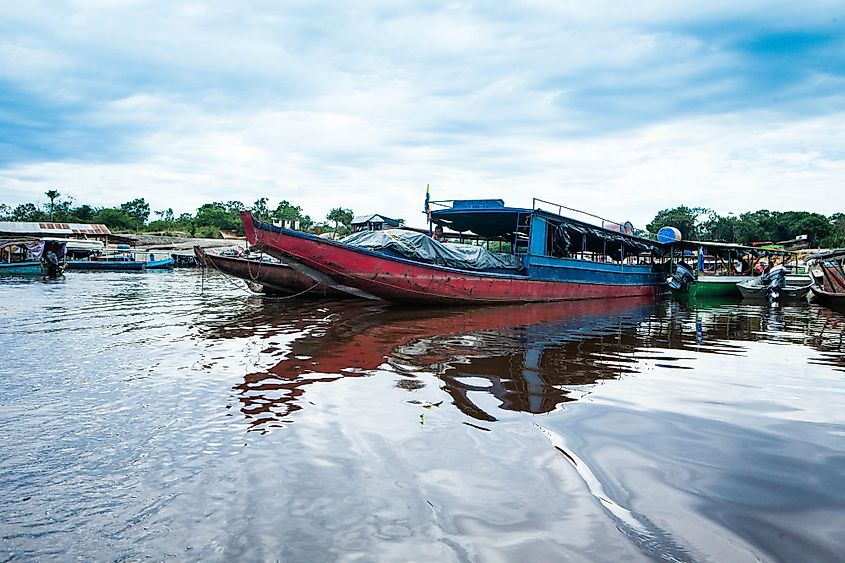
The Orinoco River represents one of the most important waterways in South America, particularly for Venezuela and parts of Colombia. One of its most important attributes is that the majority of the river is navigable by water vessels, which means it is an important transportation route for imports and exports coming into and out of the region. In fact, ocean ships are able to travel inland along the river for approximately 270 miles.
Ecological Significance
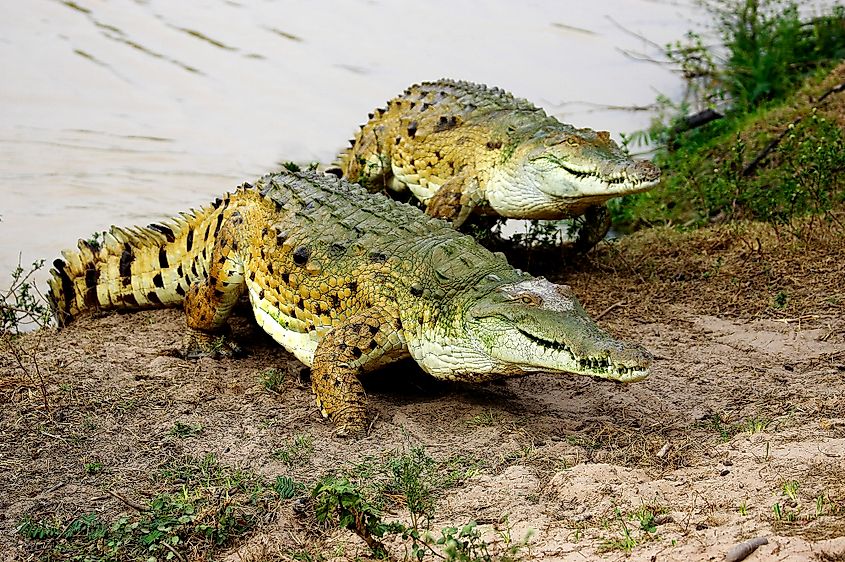
In addition to its economic importance, the Orinoco River is also an ecologically important site. It hosts a wide range of biodiverse species, several of which are endemic and threatened. One example is the Orinoco crocodile, which can only be found in and around the river. It is believed to have a population size of somewhere between 250 and 1,500 individuals. The giant otter and boto are also found in the Orinoco River system. Over 1,000 species of fish are found here including the black spot piranha.










